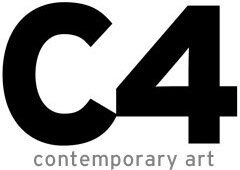

future exhibitions
past exhibitions
artists
articles
workshops
membership
store
editions
multiples
books
apparel
postcards
 |
 |
future exhibitions past exhibitions artists articles workshops membership |
store editions multiples books apparel postcards |
|
|
news
|
sitemap
|
search
|
Everything you Ever Wanted to Know about Contemporary Art but Were Afraid to AskThe 'Contemporary' vs. the 'Modern'Since the popular explosion of what is referred to as 'Contemporary Art' in the late 1980s through today, the confusion and intellectual insecurity surrounding the term has only grown with the term's dissemination. While the World of Contemporary Art may seem daunting and secretive to the outsider, it is easily understandable (as much as, say, baseball is understandable) if you allow yourself to get to know it's precedents (i.e. history. This document was written to clear up any misunderstandings still surrounding the issue. There arose, after the posthumous popularization of the term ‘Modernism’ or ‘The Modern’ in recognition of the death of the Modern, (marked by a noted change in the current of popular visual art away from direct figuration - see separate article), a need to discern distinguish newer works of the avant-garde from what went before. The Modern (as in Modern Art) had always been something of a handy catch all phrase for most – Modern being that which was ‘of it’s time’ or 'of The Now’. However... like any oft-used term or turn-of-phrase, it became victim to semantic overload (i.e. – it had acquired an unwieldy associative burden with specific types of artwork) and was therefore becoming meaningless and confusing as a descriptive term. It therefore became necessary to elect a new word to represent that which was ‘cutting edge’ and of ‘The Now’. This word was ‘Contemporary’ – at the service of denoting what we now call ‘Contemporary Art’. It is more or less as simple as that, etymologically speaking. We use the term to denote the art of the ‘avant-garde’ since the aforementioned juncture.
On the Death of Modern Art which is to say, the preoccupation or concern with representation (even and especially in Abstract Expressionism, which was a direct reaction against ‘representational’ figuration – i.e. painting a chair to look like a chair in some way or other). And so – though the Abstract Expressionists felt themselves to be abandoning representational art, it was still very much part of the same canon, very much indeed concerned with representational art. A new freedom of 'expression' was embraced. Where Jackson Pollock and others following his lead had discovered the use of materials from the industrial construction trade (Duco, or aluminized roofing paint, etc.) - it should be noted that this was only a superficial break from his medium (it was still 'paint' and used as paint).
NEXT: Understanding the Modern and it's Genesis
|